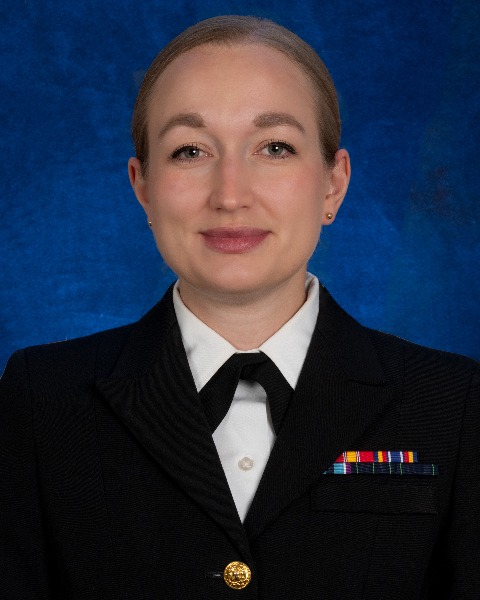Case Report
Program: Section on Uniformed Services
P3.S378: First Do No Harm: High Risk HPV in a 15yo Female
Sunday, September 29, 2024
5:00 PM - 6:00 PM EDT
Location: Poster Hall: Hyatt Regency Orlando, Plaza International Ballroom
Introduction: Human papillomavirus (HPV) is the most common sexually transmitted infection in females aged 14 to 19 in the United States. While adolescents tend to clear this infection without significant sequelae, high-risk HPV (hrHPV) subtypes are commonly associated with the development of cervical malignancies. The current recommendation of the United States Preventive Services Task Force (USPSTF) and the American College of Obstetricians and Gynecologists (ACOG) is to initiate cervical cancer screening at the age of 21 for individuals with a cervix because there is a high prevalence of hrHPV infections and a low incidence of cervical cancer in patients younger than 30. Here, we discuss the case of a 15-year-old female who presented with a diagnosis of hrHPV.
Case Description: A previously healthy 15-year-old female presented with parental concerns of repeated episodes of bacterial vaginosis and vulvovaginal candidiasis. The patient’s mother reported that the patient was also diagnosed with HPV and had not previously received the HPV vaccine. Upon review of the provided documentation from the original facility, the patient was found to have positive results for hrHPV subtypes 18 and 45 by a “Women Pathogen Panel,” which appeared to test for 12 bacterial species, Candida, hrHPV subtypes, HSV, and Trichomonas. She denied sexual activity and only endorsed engaging in self-stimulation, denying use of devices or partner involvement. Since this patient does not fall within the recommended age for cervical cancer screening by the USPSTF and ACOG guidelines, a Pap smear is not generally warranted for her age group. However, given the high risk of malignancy, providers consulted Pediatric Gynecology and Gynecology-Oncology and engaged in shared decision-making with the patient and her mother. The decision was made to obtain a Pap smear and receive the HPV vaccine. Two Pap smears were required to achieve an adequate sample with the final results negative for intraepithelial lesions or malignancy.
Discussion: Most cases of HPV in adolescents go undiagnosed and clear the body without additional evaluation or treatment; thus, there are no guidelines on how to manage positive malignant HPV strains in an adolescent when one is obtained by chance. Deciding how to proceed with this patient’s positive result for an evidently malignant HPV strain required balancing patient autonomy with providers’ and parental desire for both non-maleficence and beneficence. In the end, the potential risk of cervical cancer outweighed the likelihood that this was a false positive result and the potential trauma the patient might experience from the pelvic exam.
Conclusion: Ethical challenges arise when inappropriately obtained labs lead to potentially unnecessary and traumatic screening. This case highlights the importance of age-appropriate labs, the relevance of discussing the HPV vaccine, and the inimitability of engaging in shared decision-making when navigating uncharted management with patients and their families.
Case Description: A previously healthy 15-year-old female presented with parental concerns of repeated episodes of bacterial vaginosis and vulvovaginal candidiasis. The patient’s mother reported that the patient was also diagnosed with HPV and had not previously received the HPV vaccine. Upon review of the provided documentation from the original facility, the patient was found to have positive results for hrHPV subtypes 18 and 45 by a “Women Pathogen Panel,” which appeared to test for 12 bacterial species, Candida, hrHPV subtypes, HSV, and Trichomonas. She denied sexual activity and only endorsed engaging in self-stimulation, denying use of devices or partner involvement. Since this patient does not fall within the recommended age for cervical cancer screening by the USPSTF and ACOG guidelines, a Pap smear is not generally warranted for her age group. However, given the high risk of malignancy, providers consulted Pediatric Gynecology and Gynecology-Oncology and engaged in shared decision-making with the patient and her mother. The decision was made to obtain a Pap smear and receive the HPV vaccine. Two Pap smears were required to achieve an adequate sample with the final results negative for intraepithelial lesions or malignancy.
Discussion: Most cases of HPV in adolescents go undiagnosed and clear the body without additional evaluation or treatment; thus, there are no guidelines on how to manage positive malignant HPV strains in an adolescent when one is obtained by chance. Deciding how to proceed with this patient’s positive result for an evidently malignant HPV strain required balancing patient autonomy with providers’ and parental desire for both non-maleficence and beneficence. In the end, the potential risk of cervical cancer outweighed the likelihood that this was a false positive result and the potential trauma the patient might experience from the pelvic exam.
Conclusion: Ethical challenges arise when inappropriately obtained labs lead to potentially unnecessary and traumatic screening. This case highlights the importance of age-appropriate labs, the relevance of discussing the HPV vaccine, and the inimitability of engaging in shared decision-making when navigating uncharted management with patients and their families.

Hannah L. Poiani, MD (she/her/hers)
Pediatric Intern
Naval Medical Center Portsmouth
Norfolk, Virginia- SE
Sharon Enujioke, M.D MPH
Staff faculty
Naval Medical Center Portsmouth
Norfolk, Virginia

